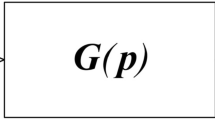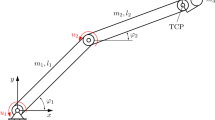Abstract
The problem of optimizing a linear, time-variant, multivariable control system with quadratic cost functional is first phrased in the context of functional analysis. It is shown that the optimum control is given implicitly as the solution of a matrix integral equation. After the fixed-point contraction mapping theorem is invoked, an iterative method for solving this equation is developed and conditions for its convergence to a unique optimum are derived. Techniques for transforming the system operator are discussed so that, when convergence of the original sequence of iterations cannot be assured, that of the transformed system can. However, it is shown specifically that there is always a finite optimization interval for which the procedure may be used. Bounds are also given for the errors, in the sense of norms, between the control aftern iterations and its ultimate value and between the cost functional aftern iterations and its ultimate value. These bounds are used to decide when to terminate the sequence. Solutions of the iterative scheme using a hybrid computer in parallel and serial modes are discussed and the delays inherent in both methods calculated. It is concluded that the method can be used to track an optimum control system, which drifts from optimum because of parameter variations, with little delay and particularly when the optimization interval is extrapolated only a little into the future. Comparison of the proposed scheme with the steepest-descent approach developed by Balakrishnan shows that the present scheme requires one-third of the computations per step and, therefore, may converge more quickly.
Similar content being viewed by others
References
Bellman, R.,Dynamic Programming, Princeton University Press, Princeton, New Jersey, 1957.
Bliss, G. A.,Lectures on the Calculus of Variations, University of Chicago Press, Chicago, 1946.
Pontryagin, L. S., Boltyanskii, V. G., Gamkrelidze, R. V., andMishchenko, E. F.,The Mathematical Theory of Optimal Processes, Pergamon Press, Oxford, England, 1964.
Noton, A. R. M.,Introduction to Variational Methods in Control Engineering, Pergamon Press, Oxford, England, 1965.
Stafford, T.,Optimum Boiler Control, Automatica, Vol. 3, Nos. 3 and 4, 1966.
Merriam, C. W.,Optimization Theory and the Design of Feedback Control Systems, McGraw-Hill Book Company, New York, 1964.
Athans, M., andFalb, P. L.,Optimal Control: An Introduction to the Theory and Its Applications, McGraw-Hill Book Company, New York, 1966.
Porter, W. A.,Modern Foundations of Systems Engineering, Collier-Macmillan, London, 1966.
Zames, G.,On the Input-Output Stability of Time-Varying Nonlinear Feedback Systems, IEEE Transactions on Automatic Control, Vol. AC-11, Nos. 2 and 3, 1966.
Sandberg, I. W.,Some Results on the Theory of Physical Systems Governed by Nonlinear Functional Equations, Bell System Technical Journal, Vol. 44, No. 5, 1965.
Sandberg, I. W.,On the Boundedness of Solutions of Nonlinear Integral Equations, Bell System Technical Journal, Vol. 44, No. 3, 1965.
Bickhart, T. A.,The Exponential Describing Function in the Analysis of Nonlinear Systems, IEEE Transactions on Automatic Control, Vol. AC-11, No. 3, 1966.
Porter, W. A.,A new Approach to General Minimum Energy Problem, Paper presented at the Joint Automatic Control Conference, Stanford, California, 1964.
Kantarovich, L. V.,Functional Analysis and Applied Mathematics, Uspekhi Matematicheskikh Nauk, Vol. 3, 1948 (English translation, National Bureau of Standards, 1953).
Balakrishnan, A. V.,An Operator Theoretic Formulation of a Class of Control Problems and a Steepest-Descent Method of Solution, SIAM Journal on Applied Mathematics, Vol. 1, No. 2, 1963.
Balakrishnan, A. V., andHsieh, H. C.,Function-Space Methods in Control System Optimization, Proceedings of the Optimum System Synthesis Conference, Wright-Patterson Air Force Base, Ohio, Vol. ASD-TDR, 1963.
Hsieh, H. C.,Synthesis of Optimum Multivariable Control Systems by the Method of Steepest Descent, IEEE Transactions on Industry and General Applications, Vol. 82, No. 66, 1963.
Hsieh, H. C.,Least-Square Estimation of Linear and Nonlinear Weighting Function Matrices, Information and Control, Vol. 7, No. 1, 1964.
Leonov, P.,On an Approximate Method for Synthesizing Optimal Linear Systems for Separating Signal from Noise, Automation and Remote Control, Vol. 20, No. 8, 1959.
Hsieh, H. C.,Synthesis of Adaptive Control Systems by Function Space Methods, Advances in Control Systems, Theory and Applications, Vol. 2, Edited by C. T. Leondes, Academic Press, New York, 1965.
Birman, M. S.,Some Estimates for the Method of Steepest Descent (in Russian), Uspekhi Matematicheskikh Nauk, Vol. 5, No. 3, 1950.
Zames, G.,Nonlinear Operators for System Analysis, Massachusetts Institute of Technology, Research Laboratory of Electronics, Technical Report No. 370, 1960.
Zadeh, L. A., andDesoer, C. A.,Linear System Theory, McGraw-Hill Book Company, New York, 1963.
Vulikh, B. Z.,Introduction to Functional Analysis for Scientists and Technologists, Pergamon Press, Oxford, England, 1963.
Kolmogorov, A. N., andFomin, S. V.,Elements of the Theory of Functions and Functional Analysis, Graylock Press, New York, 1961.
Saaty, L., andBram, J.,Nonlinear Mathematics, McGraw-Hill Book Company, New York, 1964.
Zames, G.,Functional Analysis Applied to Nonlinear Feedback Systems, IEEE Transactions on Circuit Theory, Vol. CT-10, No. 3, 1963.
Author information
Authors and Affiliations
Additional information
Communicated by A. V. Balakrishnan
The author is indebted to the Principal and the Governors of Sunderland Polytechnic for the facilities placed at his disposal and permission to publish this work.
Rights and permissions
About this article
Cite this article
Freeman, E.A. On the optimization of linear, time-variant, multivariable control systems using the contraction mapping principle. J Optim Theory Appl 3, 416–443 (1969). https://doi.org/10.1007/BF00929357
Received:
Issue Date:
DOI: https://doi.org/10.1007/BF00929357




